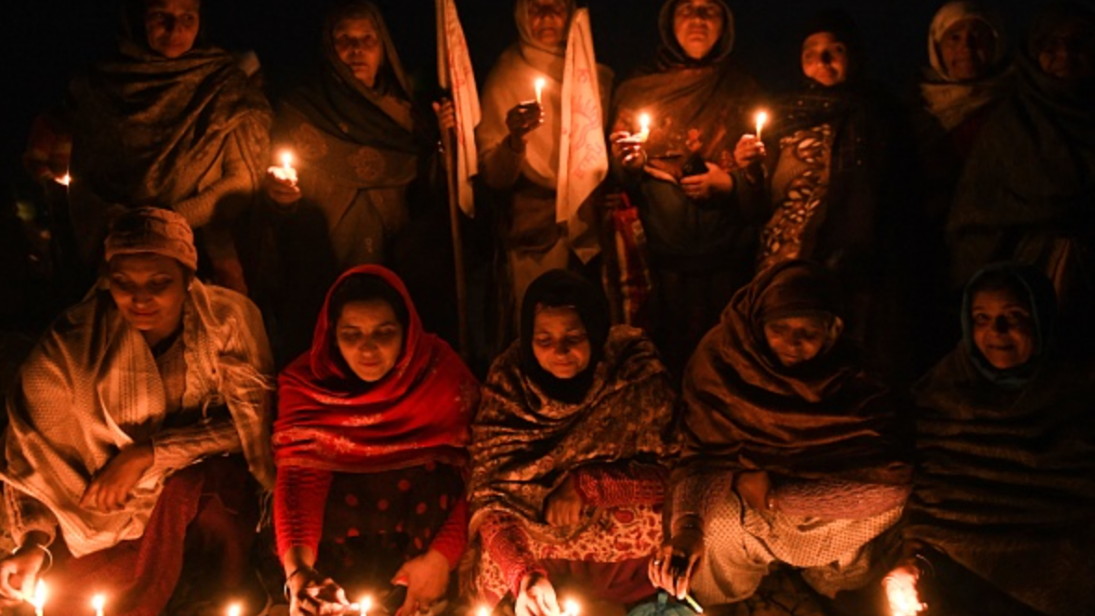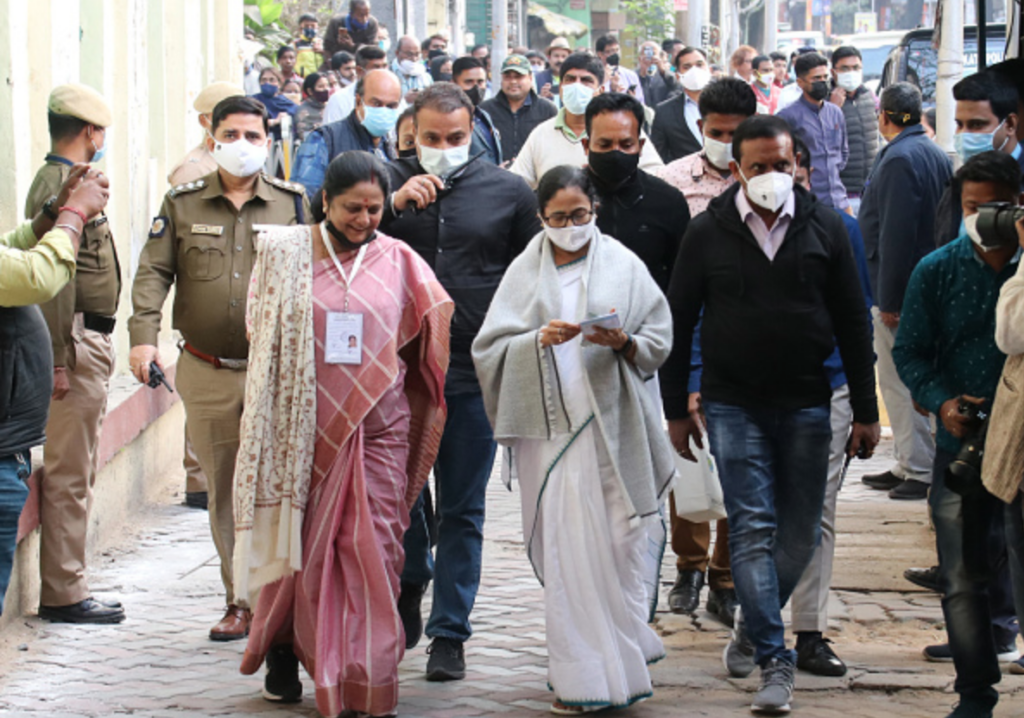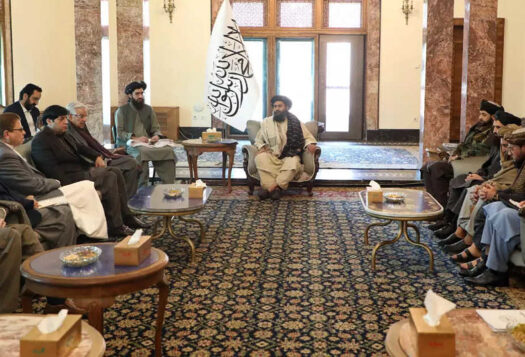
India’s political scene in 2021 appears to have come full circle. The year began with the farmers’ protest commanding the center stage and is now drawing to a close with the government finally backtracking on the three farm laws that compelled tens of thousands of farmers to make their way to the nation’s capital.
Otherwise projected as an agenda-oriented government unwilling to bow down to detractors, the Narendra Modi-led government was unable to succeed labelling naysayers as “anti-nationals” and cracking down on social media platforms. As key states in India head into elections in 2022 and against the backdrop of a traumatic second wave of COVID-19, government retracting appears to be a safe bet to avoid a repeat of the loses it saw in states such as West Bengal and Kerala in 2021. Government clampdowns on dissent, protests, social media, and independent journalism—throughout year-long farmers’ protests and a deadly COVID-19 wave—marked India in 2021 and are likely to accelerate into 2022.
What Farm Laws Tell About Indian Politics
While the farm laws raised pertinent questions about the future of India’s agrarian sector—which continues to provide the largest employment opportunities in the country—the manner in which the “reforms” were rolled out as well as the government’s backlash to any pushback bring to the forefront key contemporary undercurrents of politics in India. First, although India is often spoken of as the regional superpower, this great power discourse obscures the complexity of India’s social fabric. Rural India has long determined the outcome of Indian politics. This is evident from how the Bharatiya Janata Party (BJP)-led government could not afford to alienate farmers in the upcoming Uttar Pradesh and Punjab state elections if it wants to retain its majority in the upper house of parliament. The timing of the repeal reflects this tactical thinking.
Although India is often spoken of as the regional superpower, this great power discourse obscures the complexity of India’s social fabric. Rural India has long determined the outcome of Indian politics.
Second, the BJP government relied on ordinances to pass bills that directly affect the majority of India’s population. Side-stepping parliamentary consensus-building and instead leveraging ordinances—be it when it came to passing recent bills pertaining to federal law enforcement agencies in India or fiscal laws—is a trend that has continued under the BJP and violates democratic processes. The farm laws—which protestors articulated put them at the mercy of capitalist market forces—could have enabled the country to re-evaluate the impact of government farm subsidies, which over the past few decades incentivized growing water-intensive crops in arid and semi-arid regions, and done away with middlemen controlling the agricultural markets. The government overturning the farm laws, which were marketed as major reforms has opened questions about whether in the future, disgruntled citizens may hold unpopular decisions—particularly those targeting loss-bearing public infrastructure—at gun-point.
Clamping down on Free Speech
In bid to impede the strengthening of the anti-farm law movement, the government cracked down on activists and social media platforms. While international public figures who lent their support to the cause simply drew the Indian government’s ire, many Indian activists, such as 22-year-old Disha Ravi, were arrested on charges of sedition and criminal conspiracy, part of a larger government targeting of dissenters. These were far from one-off incidents. The government alleged that “vested interest groups” were trying to rake up anti-India sentiments and misusing social media as a battleground.
In recent years, social media has been instrumental in helping rally public opinion against heavy-handed or outright violent responses towards protestors, notably during the 2020 Black Lives Matter protests in the United States and the anti-Citizenship Amendment Act (CAA) demonstrations in India. This context informs government efforts to introduce stronger control mechanisms over these platforms. In 2021, India introduced new social media laws that now mandate platforms to regularly liaison with the government and comply with its request for information within a stipulated time. The new requirement of tracing and disclosing the source of information also extends to OTT platforms, stripping away the cloak of anonymity that has underscored online dissent.
Reporters Without Borders’ annual press freedom rankings have captured this trend, as India has consistently slid in the World Press Freedom Index and is viewed as “one of the most dangerous countries for journalists.”
A Deadly COVID-19 Wave
Attempts at image management and regulation of media also defined the Indian government’s response to a deadly COVID-19 wave. The wave hit as Indian citizens suffered from low vaccination rates and poor adherence to COVID-19 protocols, particularly around Hindu religious festivals. Between March and June the country saw nearly 200,000 deaths —numbers widely accepted as undercounts. Instead of taking devising a centralized plan—streamlining the supply-chain of medicines and shortage of medical oxygen, ramping up its vaccine rollout and resuscitating the free-falling GDP —the central government asked individual states to devise their own plans of action. Against the backdrop of rising costs of raw materials for COVID-19 drugs, India saw a burgeoning black market for anti-fungal medicines and even basic supplements essential for speedy recovery from the virus, further exacerbating the situation.
The government’s ineffectiveness reflected in how citizens were forced turn to social media to track available hospital beds, arrange oxygen cylinders and remdevisir injections. Mounting online (and print) critiques of the government’s failure to predict and contain the disaster did not bode well for the government and, as in its response to the pro-farmers’ protest handles, the government cracked down on social media posts pertaining to COVID-19 resources. Though BJP leaders and security personnel cited increasing number of scams and black marketing, the clampdown was not solely for altruistic reasons. Once again journalists critical of the government’s paltry efforts were slapped with sedition charges.
As this focus on image management combined with insufficient resources and information, the virus spread across borders, affecting India’s neighbors. As part of this, vaccine diplomacy—which India’s leaders hoped would strengthen both nation branding and ties with its neighbors—took a backseat as India expeditiously expanded its vaccine program to citizens between 18 and 44 years.

State Elections and Religious Polarization
Religious polarization continued to play a central role in BJP’s election arsenal: the party attempted to leverage communal fault lines between Muslims and Hindus amidst state elections in Assam, West Bengal, Tamil Nadu, and Kerala, especially as it tried to divert attention away from its failure to contain the second wave.
These religious fault lines were apparent in election results. Assam, a Hindu-majority state in India’s northeast, saw an uptick in BJP-controlled assembly constituencies where the population of Muslims is low. According to a post-election poll in Assam, BJP managed to secure 67 percent of the Hindu vote while the opposing coalition bagged 81 percent of the Muslim votes in the state.
While this recipe worked in BJP’s favour in Assam, it failed to make its mark in West Bengal, Tamil Nadu and Kerala, all states that fall outside the BJP’s traditional stronghold in the Hindi-speaking belt. States with their own distinct regional identities and local issues have consistently managed to keep the BJP at bay despite witnessing their own trends of religious polarization.
In 2022, BJP is likely to again invoke its tried and tested recipe of Hindu-Muslim polarization, especially as states in the Hindi belt go to polls. Uttarakhand, Uttar Pradesh, Gujarat, Himachal Pradesh and Goa have emerged as BJP bastions in recent years. In Uttar Pradesh, which is also home to the controversial Ayodhya temple-Babri mosque site, Chief Minister Yogi Adityanath is likely to succeed in implementing Hindu nationalist policies, including city renaming and banning meat in Hindu religious cities. Uttar Pradesh also adds up to 111 lower and upper house parliamentary seats, which is nearly double that of the second largest state in India and will enable BJP maintain a comfortable majority in the parliament.
Insecure About the Future of India’s Security
Domestic trends have spilled over into the realm of India’s foreign and security policy, as the developing situation in Afghanistan and icy ties with China have played in favor of Hindu right-wing groups and government centralization. The United States pulling the plug on its two decade-long mission in Afghanistan and the subsequent Taliban takeover strums on India’s deep-rooted fears – an unstable neighborhood controlled by Islamist extremists. This anxiety is the ideal breeding ground for increased Hindu right-wing activity in India. Without a more militant Hindu leadership, Hindutva leaders claim, India too will fall prey to Islamists and terrorist activity.
The developing situation in Afghanistan and icy ties with China have played in favor of Hindu right-wing groups and government centralization.
Since the fall of the previous Taliban government and installation of a democratic regime in Kabul, India had established strong ties with the Afghan government. India understood that to counter the threat from Pakistan, it needed to court friendly nations in the region. Now, with a Taliban-led government that appears amiable to Islamabad, India finds itself in an increasingly hostile neighborhood. Its western borders are flanked by Pakistan while its eastern and north-eastern borders by Pakistan’s old ally China, with whom India shares an icy relationship. The fallout from the Indo-China border clashes in Ladakh in April-June 2020 continued through 2021. India moved 10,000 troops to bulk up its mountain strike capabilities against China as tensions between the two countries persisted.
Will the Tides Change in 2022?
This year has challenged India’s economy, its health, and its socio-political fabric. 2022 is likely to bring a deepening of ongoing trends. With Omicron cases spiking across the world, there are rising concerns about a possible third COVID-19 wave in India. This could put the India’s economic recovery in jeopardy. Increased defense spending to secure its borders with China will only add to the burden.
While the BJP government may feel stresses because of a struggling economy and high unemployment rates, politically it is unlikely to face major setbacks. Its polarization recipe augurs well in many of the states that are headed to the polls in 2022. In Punjab, where it has been on the backfoot due to the farm laws, the incumbent Indian National Congress (INC) has faced incessant infighting and fractured thereby strengthening BJP’s chances. In Uttar Pradesh even though opposition parties have joined hands, these parties do not appear to have any common ground other than an anti-BJP agenda; for voters will it be enough?
***
Click here to read this article in Urdu.
Image 1: Narinder Nanu/AFP via Getty Images
Image 2: NurPhoto via Getty Images


